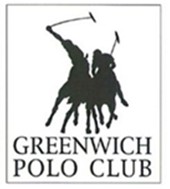Locations
| Claimants' Mark | Defendants´ Mark |
|---|---|
 |
 |
The claimants are the owners or exclusive licensee of the Beverly Hills Polo Club mark (above left) worldwide except in the USA and China. The mark is registered in the UK and the EU in classes including classes 3, 18, 24 and 25.
The claimants have brought a number of actions in the UK and at the EUIPO in relation to third parties' POLO CLUB signs.
They commenced UK High Court proceedings against a number of defendants in relation to a number of logos for passing off and trade mark infringement. The trial concerned the logo above right. The Third Defendant, Greenwich Polo Club, owns that logo. The First Defendant was its licensing agent and the Second Defendant a director of the First Defendant. The Fifth to Eighth Defendants were alleged to have sold infringing products. The case against these defendants was stayed pending the outcome of the claims against the First to Third Defendants.
High Court ruling
Smith J found that the First to Third Defendants had not traded in any goods bearing the mark above right and that the Fifth to Eighth Defendants had used that on products in Greece, Cyprus and Bulgaria. (See [2021] EWHC 1212 (Ch) for his judgment.) The claimants had argued that the First to Third Defendants were jointly and severally liable for the acts of the Fifth to Eighth Defendants. The judge commented that the pleading sought "to spread the web of liability extremely wide".
The claimants' submission that infringement should be considered based only on the logo elements of the marks and not take account of the words was dismissed by the judge. He concluded that the figurative elements of the marks was the "least significant element" of the marks and in any event were different. He stated they did nothing more than "evoke the sport of polo" noting that the mark above left consisted of a single mounted rider and the mark on the right consisted of 2 riders. He said the wording actively sought to differentiate between two originators, on the one hand the Greenwich Polo Club and on the other a lifestyle brand represented by the claimants detached from any real polo club. The word elements were orally, visually and conceptually very different.
Having found there was no likelihood of confusion, Smith J also rejected the claim that the claimants' mark had a reputation or there had been passing-off, stating that the evidence of reputation provided by the claimants was "trifling".
Having concluded that the infringement case failed against the Fifth to Eighth Defendants, the judge then considered the First to Third Defendants. The First Defendant managed the brands of third parties. It was held that the court should be extremely careful in finding that this constituted use of a brand in the course of trade. However where a party is licensing the use of a brand then accessory liability would follow. The judge said that if he had found infringement in respect of the Fifth to Eighth Defendants then that would likely have been the case here.
The claim failed against the First Defendant and, as there had been no infringement, the claim against the Third Defendant on the grounds of joint and several liability was also dismissed.
The Second Defendant was alleged to be jointly liable with the First Defendant as a director of that company. Given the case against the First Defendant had failed, the judge thought it was artificial to consider independently the liability of the director. Even if there had been an infringement, on the facts he would require some persuading that what he called the limited activity of the director would make him liable as a joint tortfeasor. He stated the mere signing of contracts would not amount to the director being a joint tortfeasor.
Result
All the claims were dismissed. The judge stated that if there had been infringement he would have had to consider whether he could grant an EU wide injunction in relation to EU trade marks for a period after Brexit (ie from 1 January 2021) but this was unnecessary in this case. It would have been interesting if he had had to look at this issue here.
